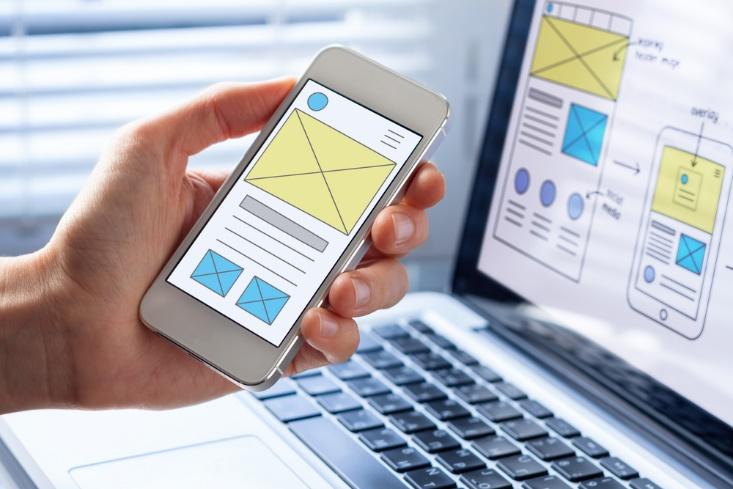A good user interface (UI) and user experience (UX) are essential if you want to appeal to your target audience.
UI/UX designers are in high demand. They play a huge role in website and app design. UI/UX design is a growing field. This is why the demand for professionals is on the rise.
According to a report, a career in UX can help one easily earn about $52,683 across 107 countries. There is no denying that it can be extremely exciting to work in the field. The salary is only higher in wealthier regions like Western Europe, Switzerland, United Kingdom, Australia, and the US.
As more UX design jobs pop up, it is important to possess the top UI and UX design skills to secure a job. If you are considering joining the field, you must learn the following skills.
1. Design Thinking
One of the most important UI and UX design skills that you need to master is design thinking.
It is a process that allows one to identify the problem, map out possible fixes, come up with possible solutions, test the prototypes, and refine the final product before deploying it.
The fact is that the cycle can be repeated numerous times throughout the life of the product or service. The reason why you need to learn design thinking is that it allows you to create a design to respond to changing user behavior and the environment.
With the world becoming more tech-forward and complex, designers have to brainstorm innovative solutions to problems before consumers even encounter them.
2. Decision Mapping
The next skill that designers need to learn is decision mapping. Similar to design thinking, it offers a theoretical overview of how to best approach problems and solve them.
Even a digital marketing company and other types of businesses can benefit from decision mapping.
The skill requires one to resolve research problems, ensure clarity, and include the findings to take the right decisions. The following questions will help you get a better idea of what it is all about.
- Should the product be developed?
- Would the removal of a feature have any negative consequences?
- How to design the navigation of the site in the best way?
Only when you have answered the questions can you proceed with the decision-making process. You will also need to create a framework for the data you collect and analyze.
3. Prototyping
Designers can utilize prototyping for grappling with technical challenges. The process can be used by professionals to assess the product performance, determine the user base, and identify the problems that users might encounter.
Prototyping enables designers to experiment with different functions and forms to build the perfect product. It eliminates the need to continuously rebuild fully-fledged products.
The first thing that you need to do is sketch out your ideas. You can either use simple software or a piece of paper.
The sketch will serve as a wireframe that would allow you to determine the elements needed to create the product. Then, an HTM-based prototype can be made which would define the functionality of the product.
Company stakeholders and developers rely on the prototype for getting a picture of how the final product would appear and function before it is created. There are various tools that designers can use for churning out the prototype such as Adobe XD and Sketch.
4. Basic Front End Coding
To secure a job as a UX designer, you need to know basic front-end coding. The front end allows you to see what an end-user would interact with. It comprises three coding languages which include HTML, JavaScript, and CSS.
HTML (Hyper-Text Markup Language) is a coding language that is tag-based. It allows developers to define the structure of the web page. Developers can use HTML to block out the media in a simple text file. CSS is used for styling plain HTML elements.
As for JavaScript, it brings basic styling to life. It is used for making the website highly responsive and dynamic. JavaScript allows developers to create interactive animations.
Even though it is not necessary for a UX designer to possess front-end programming knowledge, it could boost your chances of landing a job. There are plenty of crash courses that you can sign up for to acquire the desired knowledge.
5. Empathy
The secret to designing the perfect product that real people can use is empathy. You must gain a deeper understanding of your target audience. You need to ensure that the product makes the lives of users a lot better and is easy to use.
People tend to confuse empathy with sympathy. However, the two are entirely different. Empathy requires you to gain a better understanding of the challenges people might face when they use your product and not just how you feel about it.
Empathy allows you to be creative in the sense that it requires you to put your perspective aside and focus on what your target audience wants. Besides, you cannot simply rely on research to be successful. You have to put yourself in the shoes of the end-user.
6. Communication
As a UX designer, you need to effectively communicate your offering with customers. Now, you might think that every company only hires people with excellent communication skills. However, a UX design role truly requires a high degree of communicative ability.
Expert communication skills allow you to collaborate and send the right message. Designers need to be able to communicate to advocate for the project with teammates and company stakeholders. They should have no trouble demonstrating their findings.
Conclusion
There is no denying that a career in UI and UX design can be highly rewarding. This is why you need to prepare yourself for the future.
Once you have finished reading this post, you will know about the top 6 UI and UX design skills for 2021 and beyond. From learning design thinking to communication skills, you should be able to land your dream job once you master the skills mentioned above.






